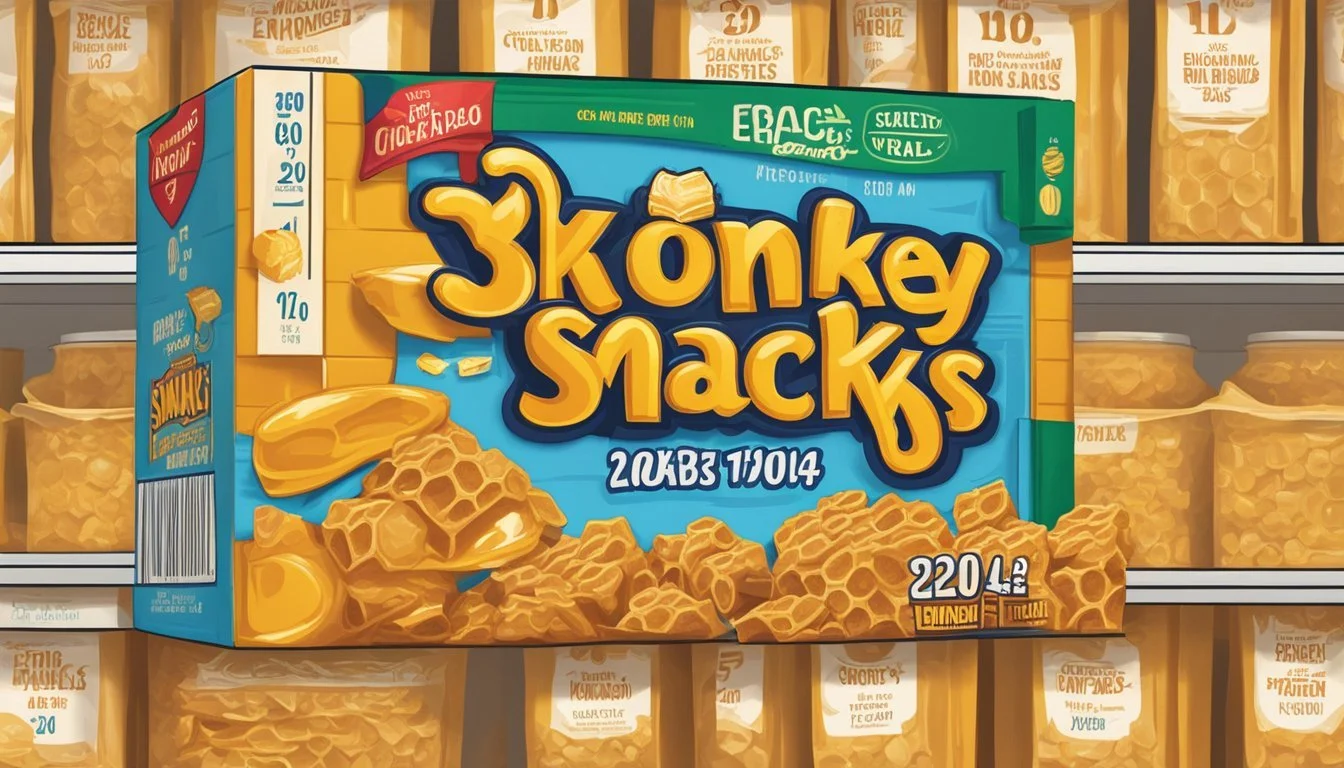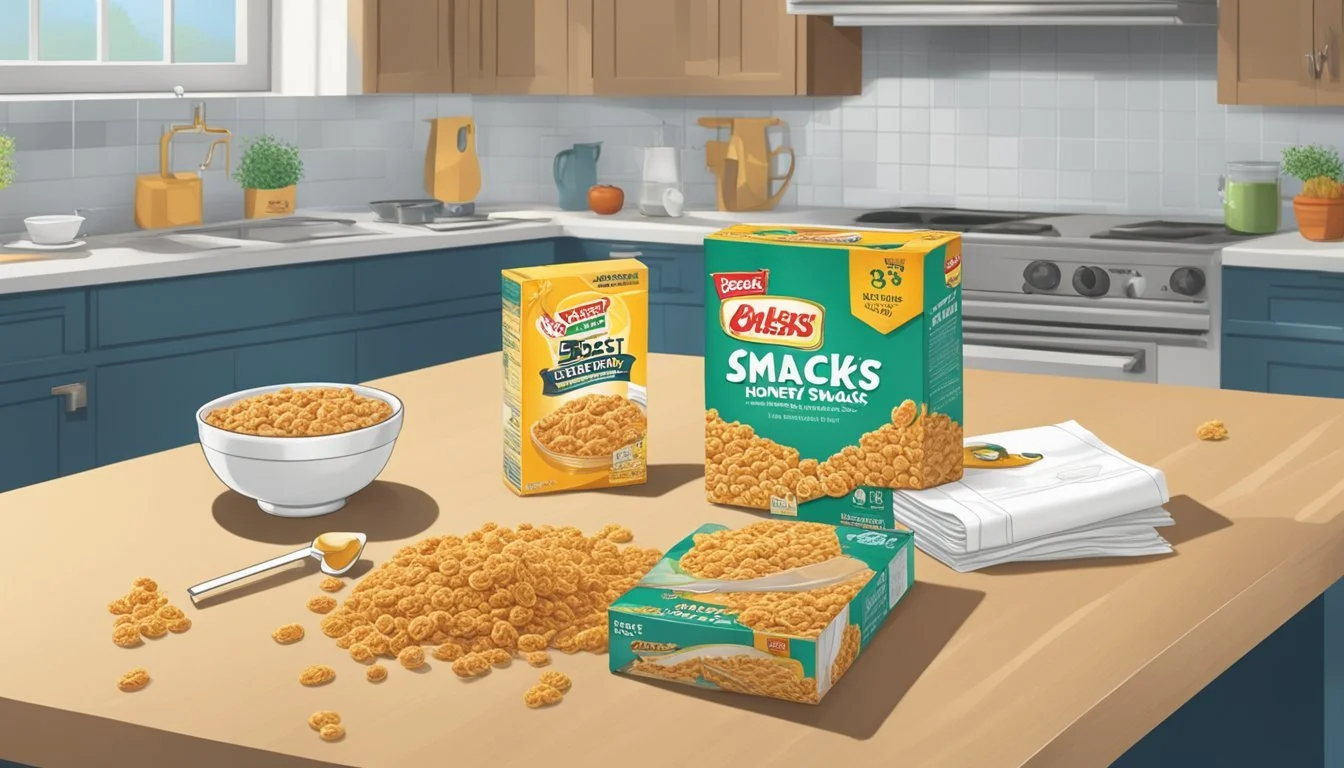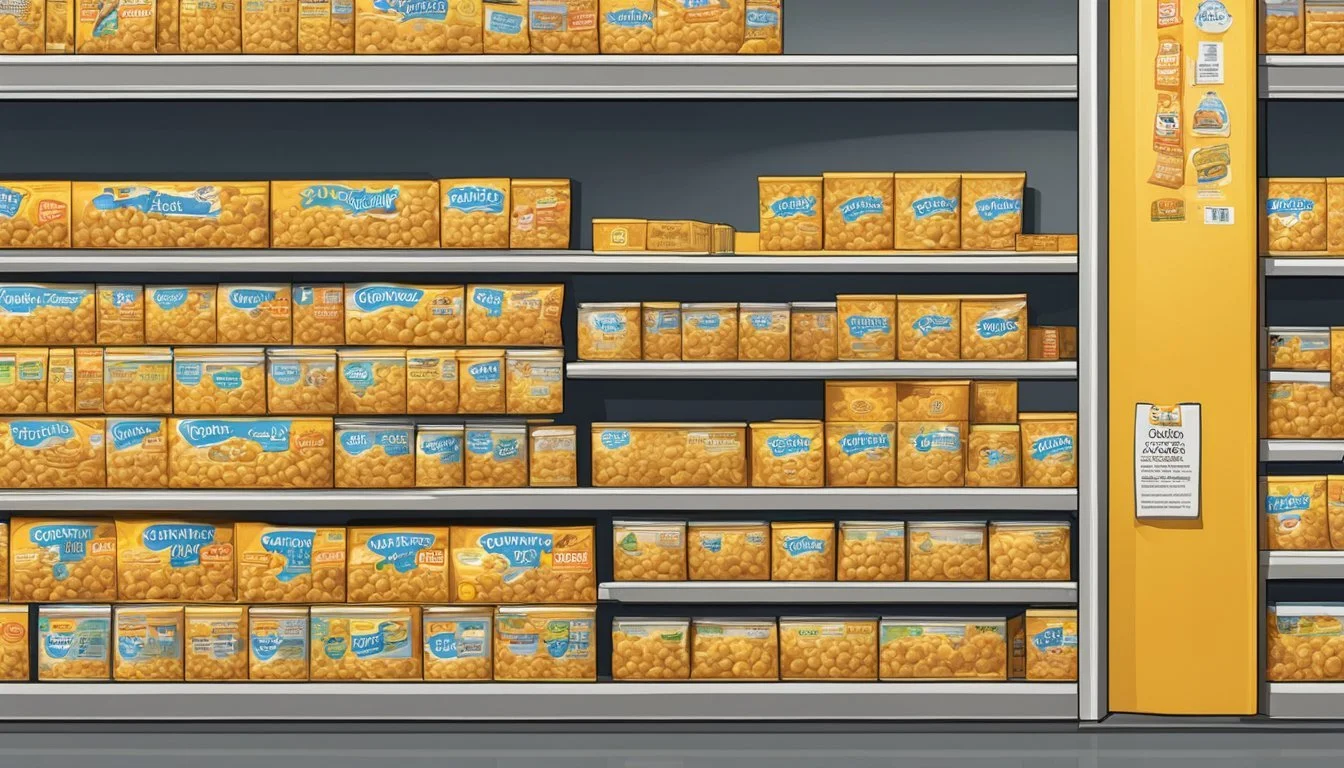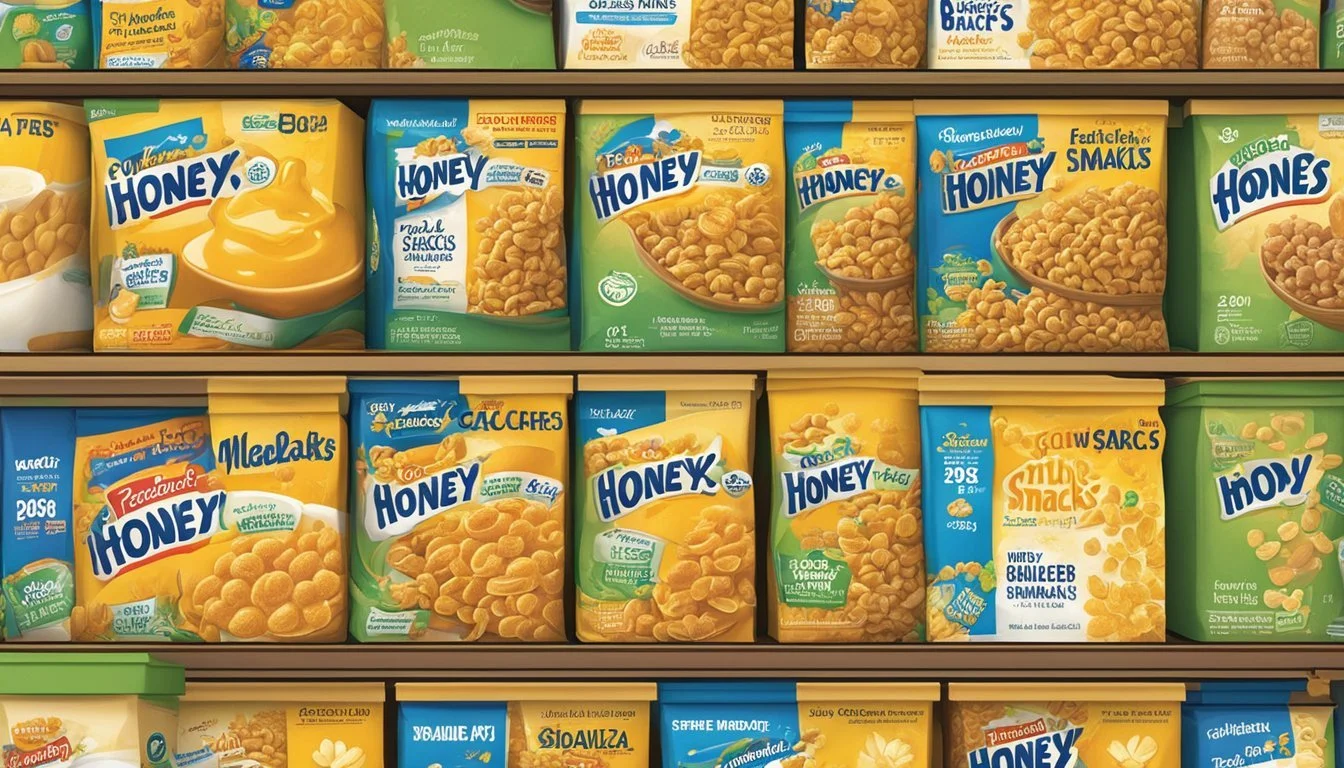How Long Do Honey Smacks Last?
Shelf Life and Storage Tips
When assessing the shelf life of Honey (What wine goes well with honey?) Smacks, it's important to consider the durable nature of cereal as a dry, shelf-stable product. Honey Smacks, a popular breakfast cereal known for its sweet puffed wheat flavor and distinctive frog mascot, maintains its prime quality within a certain period post-production when stored properly. It inherits the preservative traits of dry cereals, which are designed to last for months on the shelf due to their low moisture content and stable ingredients.
However, like most cereals, Honey Smacks have a “best by” date printed on the packaging, which indicates the period during which the product is expected to retain its best flavor and texture. While this date provides a useful guideline for optimal consumption, the cereal is often safe to eat beyond this period, if unopened and stored correctly. Proper storage in a cool, dry place is essential to extend the cereal's shelf life and preserve its taste and nutritional qualities. Exposure to high humidity or heat can negatively impact the cereal, leading to a loss of crispiness and potentially, the development of undesirable flavors.
In summary, Honey Smacks remain a reliable choice for a quick and satisfying breakfast due to their ability to maintain quality over time when unopened and properly stored, even potentially past the “best by” date. It's a consumer-favored option that balances convenience and longevity, continued preservation of quality being dependent on storage conditions and adherence to packaging guidelines.
History and Evolution
Honey Smacks cereal has seen a variety of changes since its introduction, from name transitions to mascot shifts, reflecting consumer trends and branding efforts by Kellogg's.
Origin and Name Changes
Introduced in 1953, Honey Smacks was originally known as Sugar Smacks. In response to a growing health-conscious public, the cereal underwent a rebranding in the 1980s, changing its name to Honey Smacks to emphasize the shift away from processed sugars and to highlight the use of honey.
Mascots over the Years
Honey Smacks has employed an array of mascots since its inception. Initially, it was Cliffy the Clown, who entertained as the face of the brand during the early 1950s. The brand's association with clowns later gave way to a variety of characters including Smaxey the Seal. Moving forward, Kellogg's introduced a string of mascots like Quick Draw McGraw and the Smackin' Brothers to resonate with a changing audience. In 1986, Wally the Bear took over the role briefly, only to be replaced again due to popular demand for Dig'em Frog, who has since become synonymous with Honey Smacks. The cereal itself has paralleled a sister brand, Golden Crisp, (how long does golden crisp last?) which shared a similar puffed wheat base and sweet honey flavor profile.
Product Details
This section covers the specific aspects of Kellogg's® Honey Smacks® cereal, such as its ingredients, nutritional content, and taste profile, which are key to understanding the longevity and storage of the product.
Ingredients
Kellogg's® Honey Smacks® cereal contains whole grain wheat as its primary ingredient, contributing to its whole grain content. Sweetness is primarily derived from sugar, honey, and glucose syrup. The product includes less than 2% of palm oil, fruit juice for color, salt, canola lecithin, and mixed tocopherols (vitamin E) to maintain freshness.
Nutritional Information
A single cup serving size (36g) of Honey Smacks® cereal provides the following nutritional value:
Calories: 130
Total Fat: 0.5g
Saturated Fat: 0g
Sodium: 45mg
Total Carbohydrates: 31g
Dietary Fiber: Less than 1g
Total Sugars: 18g (includes added sugars)
Protein: 2g
Taste Profile
Honey Smacks® cereal is known for its sweet flavor profile, thanks to the inclusion of honey and sugar. It features puffed wheat grains that provide a light and crispy texture. The taste is designed to be appealing for both breakfast and snack times, offering a sweet, satisfying crunch.
Food Safety and Recalls
Ensuring the safety of food products is crucial, and recalls are a significant aspect of food safety measures. This section covers the historical recalls of Honey Smacks cereal and a specific salmonella outbreak linked to the product.
Recall History
The Kellogg Company has a history of recalling Honey Smacks cereal when safety issues arise. Notably, voluntary recalls have been issued in response to potential health risks, such as contamination. The recalls have been executed in coordination with the FDA to prevent consumers from being exposed to unsafe products.
Salmonella Outbreak
A concerning salmonella outbreak was linked to Honey Smacks cereal, prompting public health advisories from the CDC. The outbreak led to significant consequences, including hospitalizations across multiple states. The cereal was identified as the source of the infection, leading to a nationwide recall. This recall was a response to the detection of salmonella, a bacteria that can cause serious and sometimes fatal infections.
Storage and Shelf Life
When it comes to the cereal Honey Smacks, understanding the importance of storage conditions is crucial for preserving its quality and prolonging shelf life. These factors directly impact the cereal's taste, texture, and safety for consumption.
Proper Storage Methods
Container: Always store Honey Smacks in an airtight container to prevent the ingress of air and moisture, which can spoil the cereal.
Location: Place the container in a cool, dry area away from direct light and heat sources to avoid degradation of oils and flavors.
Temperature: Aim for storage temperatures that are consistently below 77°F (25°C) to maintain optimal freshness.
Avoid Refrigeration: Storing Honey Smacks in the fridge can introduce moisture and may cause the cereal to become soggy.
Identifying Expired Products
Expiration Date: Pay attention to the expiration date on the packaging, as it is a good initial indicator of the cereal's expected shelf life.
Texture and Smell:
If Honey Smacks have a stale smell or the texture has changed, becoming either too hard or too soft, it may indicate spoilage.
Oils in the cereal can go rancid, detectable by an off smell or taste.
Visual Inspection:
Look for any changes in color or the presence of insects, which can suggest that the cereal has been compromised.
By adhering to these storage principles, consumers can ensure their Honey Smacks retain their intended quality for the maximum possible duration.
Variants and Comparisons
In analyzing Honey Smacks’ longevity, it's essential to consider how this cereal differs from its competitors and how regional versions may vary in composition.
Differences from Similar Products
Honey Smacks, a product of Kellogg's, is often compared to Golden Crisp, formerly known as Sugar Crisp, which is produced by Post. The primary difference between these cereals lies in their taste and nutritional content.
Honey Smacks:
Higher sugar content per serving
Distinct honey flavor
Puffed wheat composition
Golden Crisp:
Less sugar per serving compared to Honey Smacks
Mild flavor profile
Additional vitamins and minerals, including Thiamin and Niacin
Nutrient Honey Smacks Golden Crisp Calories Lower Higher Sodium Lower Higher Carbohydrates Lower Higher Sugars Higher Lower Added Vitamins/Mins Fewer More (incl. Thiamin & Niacin)
Regional Variations
Honey Smacks exhibits some variability across international markets. In some European countries like Germany, Spain, France, Belgium, and the Netherlands, the cereal may simply be known as Smacks.
Germany:
Known as Smacks; adheres to European food regulation which may affect sugar content and fortification
Spain and France:
Similar branding and composition to Germany's Smacks with slight variations in packaging
Other American cereal brands, such as Malt-O-Meal and Lucky Charms (how long do lucky charms last?) (by General Mills), offer competing breakfast options, but their product formulations remain unique and are typically not direct substitutes for Honey Smacks in terms of taste and texture.
Each region's variation of Honey Smacks considers both consumer preference and local food regulations, which can affect everything from the cereal's nutritional value to its fortification with vitamins and minerals.
Consumer Information
When considering purchasing Honey Smacks, consumers should be aware of the cereal's high sugar content and its categorization as a sweetened puffed wheat snack. Consumer feedback has influenced the product's lifespan and availability.
Buying Guide
When buying Honey Smacks, consumers should check the 'best if used by' date on the package to ensure freshness. The sweetened puffed wheat cereal is marketed as a quick and easy breakfast option, often enjoyed during the hustle of a Saturday morning. It's sold in various package sizes, accommodating different consumer needs.
Shelf Life: Typically, cereals like Honey Smacks maintain their best quality for about six to twelve months when unopened.
Storage: To extend freshness post-opening, consumers should store the cereal in a cool, dry place and ensure the bag is sealed or transferred to an airtight container.
Consumer Reports and Feedback
Feedback from consumers plays a critical role in shaping the product's market presence. Historical reports indicate changes in mascots and public concerns over health issues have affected Honey Smacks. When choosing this cereal, shoppers should consider:
High Sugar Content: Reviewers often point out the high sugar content, suggesting moderation in consumption for a balanced diet.
Recipe Updates: Manufacturer responses to consumer demand may lead to changes in the recipe, affecting the cereal's taste and nutritional profile.
Consumer reports highlight the importance of reading the label to understand the current formulation of the product. They also discuss the brand's involvement in safety recalls, emphasizing the need for consumers to stay informed through credible sources for any updates concerning food safety.
Marketing and Branding
In the competitive landscape of breakfast cereals, Honey Smacks stands out through memorable advertising campaigns and a clear focus on its target audience. The brand leverages both to ensure longevity in the market.
Advertising Campaigns
Honey Smacks has made significant strides in advertising, using various mascots over the years to appeal to consumers. Initially, the mascot was Cliffy the Clown, serving from 1953 to 1956, followed by others that anchored the brand's identity. The advertising messaging accompanied these vibrant mascots often emphasized taste and supposed health benefits, which has been a staple in their Saturday morning commercials.
Target Audience
Honey Smacks has traditionally targeted children, particularly through their captivating Saturday morning advertisements. These campaigns are tailored to resonate with kids, often airing during cartoon blocks when the brand's primary target audience is most likely to be watching television. The cultural association of Honey Smacks with cartoons and carefree weekends helps to anchor the cereal in the memories of its consumers.








